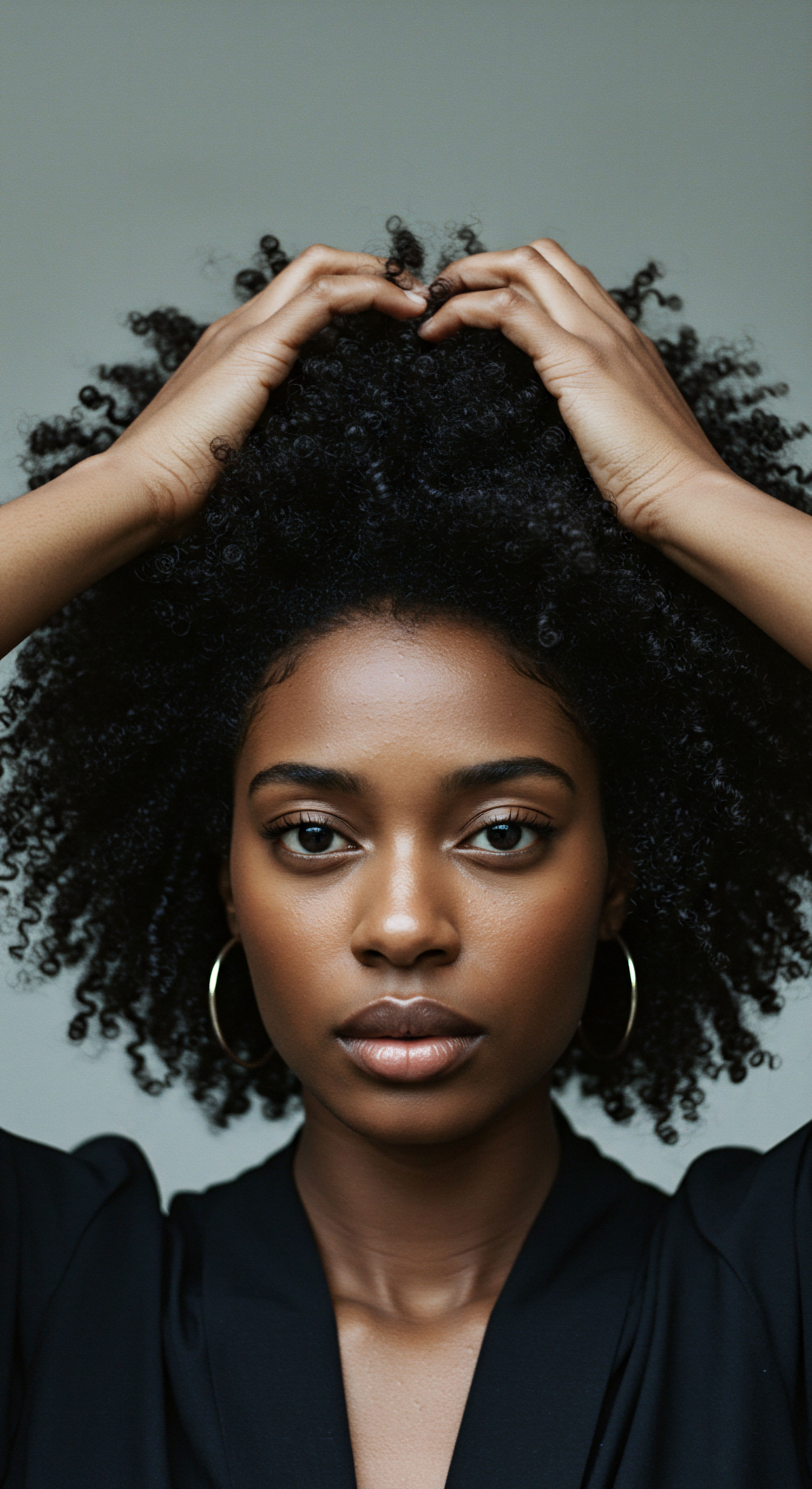
Roots
Have you ever noticed how the very air around us seems to whisper secrets to our strands, particularly when the world outside turns parched and crisp? That subtle shift, when coils that once lay softly now reach skyward with an unexpected enthusiasm, holds a quiet wisdom about the very essence of our hair. This visible transformation, often seen as hair defying gravity, speaks volumes about the intimate relationship between our textured tresses and the invisible forces at play in our environment. It beckons us to look closer, not just at the surface, but at the very heart of each strand, understanding its innate structure and how it responds to the world it inhabits.
To truly grasp why curly hair takes on a life of its own in arid conditions, we must first journey inward, into the microscopic architecture that grants our coils their remarkable character. Each strand of hair, whether tightly coiled or gently waved, is a marvel of biological engineering. It is primarily composed of keratin, a strong, fibrous protein. This protein forms three distinct layers, each playing a vital role in the hair’s overall integrity and how it interacts with moisture and static.

Hair’s Inner Workings and Moisture
The outermost layer, the Cuticle, acts as the hair’s protective shield. Composed of overlapping, scale-like cells, much like shingles on a roof, the cuticle’s primary function is to regulate the entry and exit of moisture. When hair is healthy and well-hydrated, these scales lie flat, creating a smooth surface that reflects light and locks moisture within. Dry air, however, can disrupt this serene alignment.
As the surrounding air becomes devoid of humidity, the hair begins to lose its internal water content. This desiccation can cause the cuticle scales to lift and separate, creating a rougher surface. This rougher surface is not only less capable of holding onto precious moisture but also becomes a prime candidate for external influences that cause hair to stand up.
Beneath the cuticle lies the Cortex, the hair’s thickest layer. This is where the magic of curl formation truly resides. The cortex consists of bundles of keratin fibers, held together by various types of bonds, including disulfide bonds, ionic bonds, and, most pertinent to our discussion, hydrogen bonds. Hydrogen bonds are weaker than disulfide bonds, yet they are incredibly responsive to water.
When hair is wet, water molecules break and reform these hydrogen bonds, allowing the hair to be reshaped. As hair dries, these bonds reform, locking the hair into its new configuration. In a dry environment, the absence of ample water molecules means these hydrogen bonds are already firmly set, contributing to the hair’s inherent structure but also influencing its susceptibility to static.
The innermost layer, the Medulla, is not always present in all hair types, particularly finer strands. Its exact function remains a subject of ongoing scientific inquiry, but it is believed to play a role in the hair’s overall strength and perhaps even its thermal insulation properties. While less directly involved in the immediate “standing up” phenomenon, the medulla contributes to the hair’s overall mass and structural integrity, which indirectly influences how it behaves.
Hair’s intricate layers, from the protective cuticle to the curl-defining cortex, dictate its response to environmental moisture.
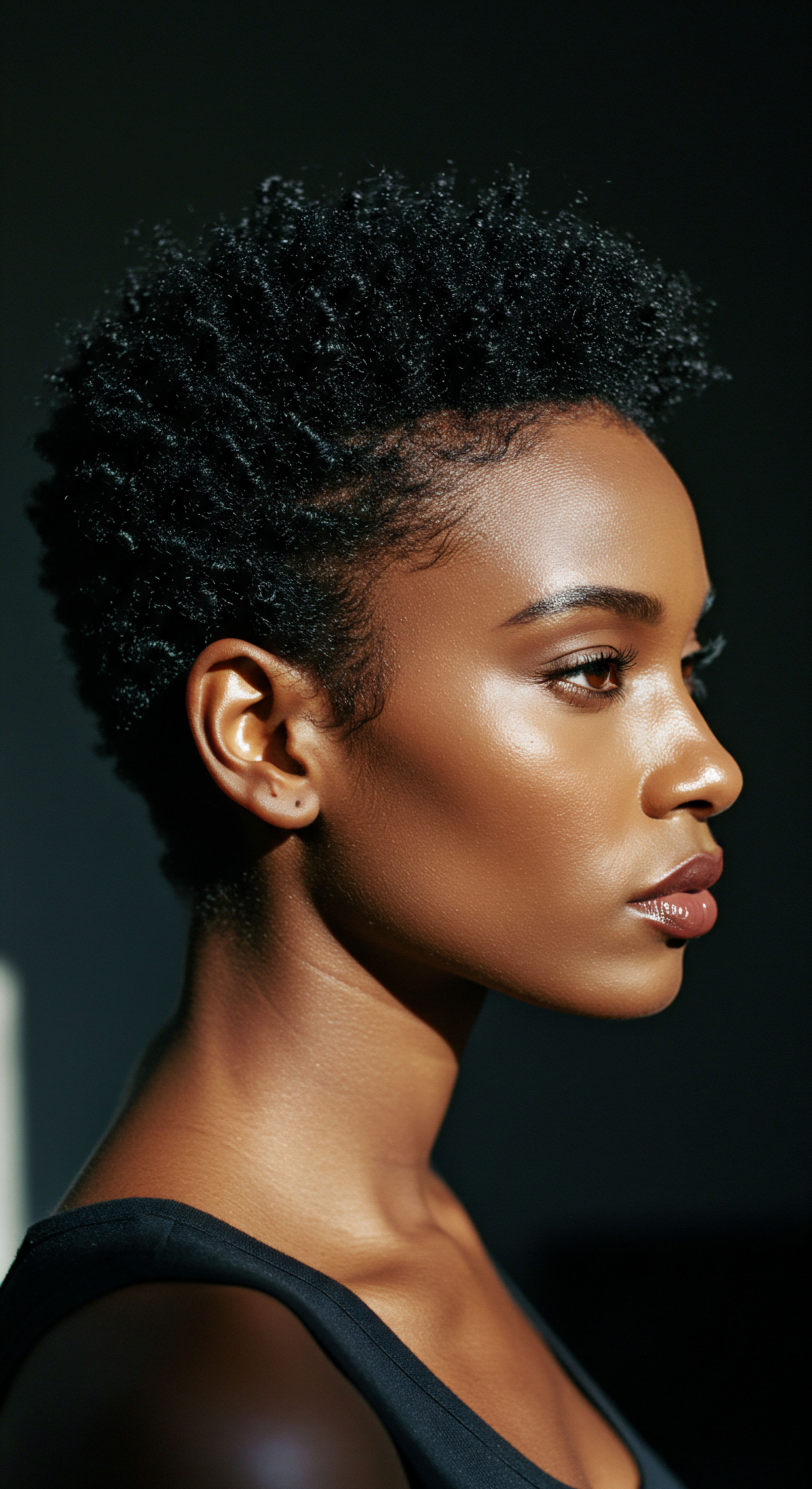
The Porosity Puzzle
A concept deeply intertwined with how hair reacts to dry air is Porosity. Hair porosity refers to how easily moisture can penetrate and escape the hair shaft. It is primarily determined by the state of the cuticle layer. Understanding one’s hair porosity is a grounding step in understanding its behavior in varying climates.
- Low Porosity Hair ❉ This hair type has tightly bound cuticle scales that lie flat. It tends to resist moisture absorption but also resists moisture loss once hydrated. In dry air, it might struggle to take in moisture, but once sealed, it can retain it well.
- Medium Porosity Hair ❉ Considered the ideal, this hair type has cuticle scales that are slightly less compact, allowing for balanced moisture absorption and retention. It generally handles environmental changes with greater ease.
- High Porosity Hair ❉ This hair type has raised or damaged cuticle scales, often due to chemical processing, heat styling, or genetic predisposition. It readily absorbs moisture but loses it just as quickly. In dry air, high porosity hair is particularly vulnerable to rapid moisture depletion, making it prone to the “standing up” effect as it struggles to hold onto any hydration.
When the air is dry, hair with higher porosity, having more open cuticles, will experience a more pronounced and rapid loss of water molecules. This loss causes the hair to become brittle, leading to a heightened susceptibility to static electricity and a more pronounced tendency to lift and separate. The hair literally tries to pull moisture from the air, and when the air offers none, it becomes increasingly parched and electrically charged.

Hair Growth Cycles and Influencing Factors
The life cycle of a hair strand also plays a subtle role in its overall health and resilience against environmental stressors. Hair undergoes three main phases ❉ anagen (growth), catagen (transition), and telogen (resting). Healthy hair, particularly during its anagen phase, tends to be more robust and resilient.
However, factors like nutrition, stress, and overall well-being can impact the hair’s ability to maintain its moisture balance and structural integrity. A diet lacking in essential nutrients, for example, can result in weaker strands with compromised cuticles, making them more vulnerable to the drying effects of arid air and the subsequent lift.
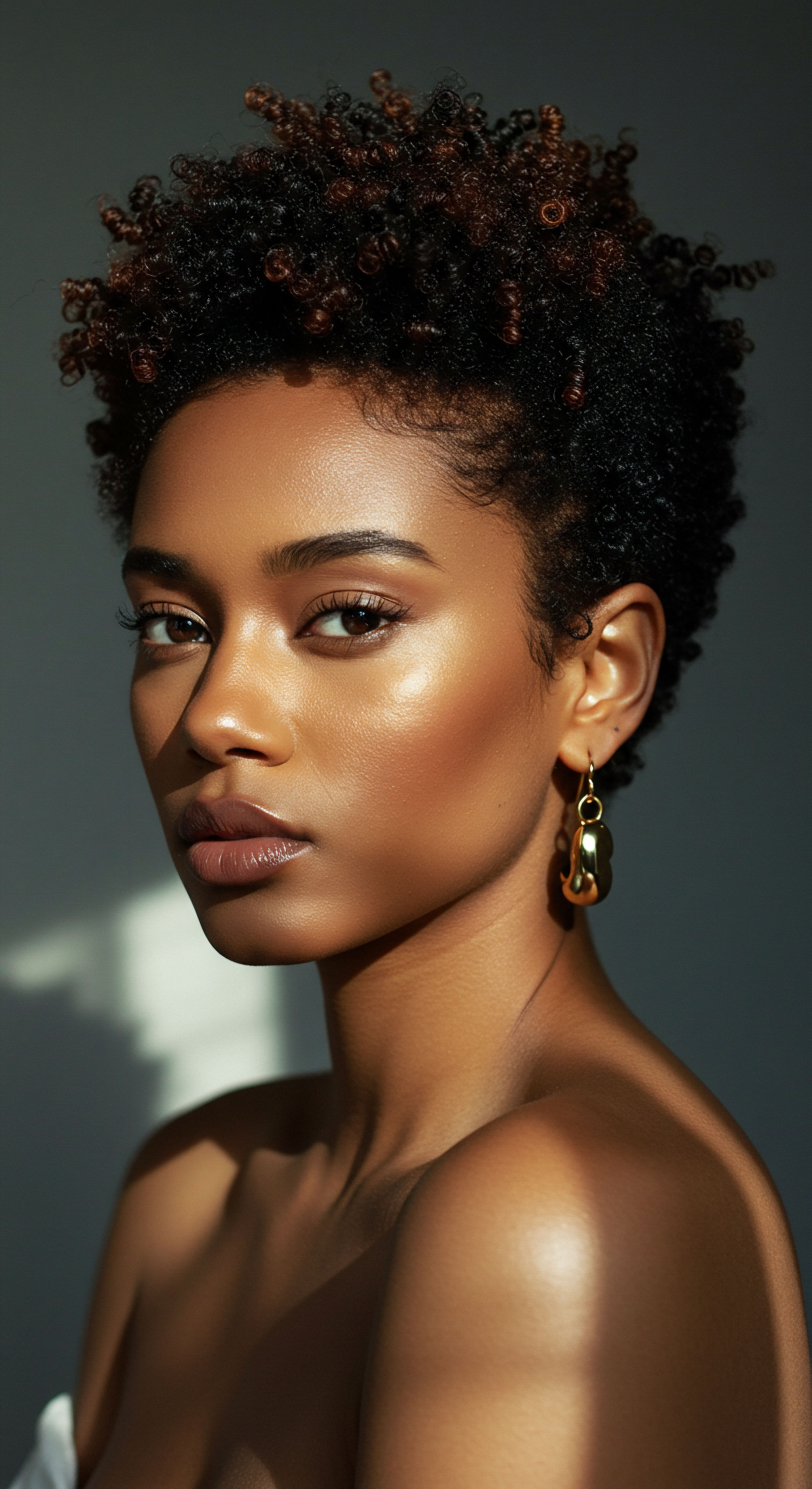
Ritual
Stepping from the foundational understanding of hair’s inner world, we now turn our gaze to the deliberate practices that honor and support its delicate balance, particularly when facing the challenges of a parched atmosphere. The wisdom gleaned from centuries of hair care, combined with contemporary understanding, offers a guiding hand in nurturing our strands. This section delves into the daily and periodic rhythms that help textured hair remain serene and grounded, even when the air attempts to coax it skyward.
The quest for sustained moisture is a continuous dance, a gentle offering to our coils. In dry air, the very atmosphere seems to conspire against our hair’s inherent need for hydration. This is where intentional routines, rooted in knowledge and kindness, become our most steadfast allies.
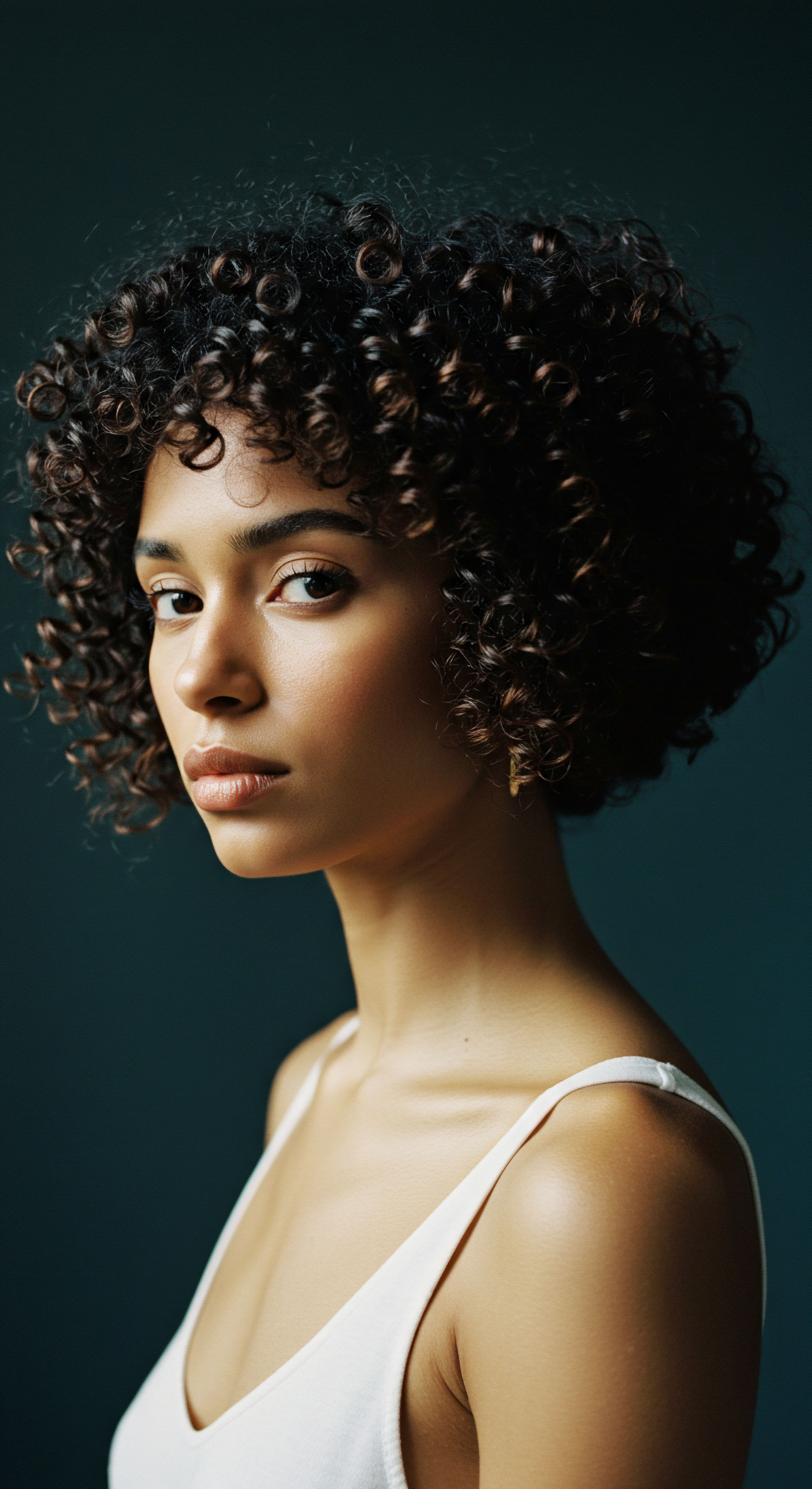
The Hydration Embrace
Hydration is the cornerstone of managing textured hair in dry conditions. It is not merely about wetting the hair, but about infusing it with water and then carefully sealing that water within the hair shaft. This process helps to keep the cuticle scales lying flat, reducing friction and minimizing the conditions that lead to hair standing up. A proper hydration ritual begins with water itself, often followed by products designed to attract and hold moisture.
- Leave-In Conditioners ❉ These are a cherished part of a moisture-retention strategy. Applied after cleansing, they provide a foundational layer of hydration that stays on the hair, offering a continuous drink for the strands. Look for leave-ins with humectants like glycerin or hyaluronic acid, which draw moisture from the air, but use them judiciously in extremely dry climates where they might draw moisture from the hair if the air is drier than the hair itself.
- Creams and Milks ❉ These provide a heavier layer of moisture and often contain emollients that help to soften the hair and smooth the cuticle. They work in tandem with leave-ins to build up the hair’s internal moisture reserves.
- Oils and Butters ❉ These are primarily sealants. They do not add moisture themselves but form a protective barrier over the hair shaft, preventing the rapid evaporation of the water and humectants applied beforehand. Applying a light oil or butter after your hydrating products helps to lock in the goodness, keeping your coils supple and less prone to environmental agitation.
A practical example of this layering approach, often referred to as the L.O.C. (Liquid, Oil, Cream) or L.C.O. (Liquid, Cream, Oil) method, demonstrates this sequence.
One might first apply a water-based leave-in (Liquid), then a rich cream (Cream), and finally a sealing oil (Oil). This deliberate layering creates a multi-layered shield against the moisture-sapping effects of dry air.
Thoughtful layering of hydrating and sealing products forms a protective shield against moisture loss in arid environments.

Nighttime Sanctuary and Bonnet Wisdom
The hours we spend in slumber offer a precious opportunity to protect and preserve our hair’s moisture. Nighttime rituals are not merely about convenience; they are a vital act of preservation against friction and moisture loss. Cotton pillowcases, while comfortable for our skin, are notorious for their absorbent properties. They can wick away moisture from our hair, leaving it dry and more susceptible to static and the “standing up” effect by morning.
This is where the wisdom of the Bonnet, the scarf, or the satin pillowcase truly shines. These accessories provide a smooth, low-friction surface for our hair to rest upon. Silk and satin, unlike cotton, do not absorb moisture from the hair. Instead, they allow the hair to glide effortlessly, reducing tangles, breakage, and the generation of static electricity that often accompanies dry hair rubbing against rough surfaces.
A satin-lined bonnet, in particular, offers a cocoon of protection, keeping coils compressed and protected from environmental stressors throughout the night. This simple, yet profoundly effective, ritual ensures that the hydration efforts of the day are not undone by the night.

Gentle Handling and Tool Choices
Beyond products and nighttime routines, the very way we interact with our hair holds significant sway. In dry conditions, hair becomes more fragile and prone to breakage. Aggressive detangling or styling can lift the cuticle, exacerbating dryness and leading to more static. Using wide-tooth combs or fingers for detangling, especially when hair is slightly damp with conditioner, minimizes friction.
Opting for styling tools made of materials that do not readily generate static, such as wood or certain types of plastic, can also make a noticeable difference. The goal is to reduce any action that might disrupt the hair’s delicate moisture balance or create an electrical charge.

Relay
Having explored the foundational architecture of our strands and the rituals that sustain their vitality, we now turn to a deeper examination of the forces that compel curly hair to reach for the sky in dry air. This inquiry transcends mere surface observation, guiding us into the intricate interplay of physics, chemistry, and environmental dynamics. The phenomenon of hair standing up is not simply a matter of dryness; it is a captivating demonstration of electrostatic principles at work, a silent conversation between our hair and the surrounding atmosphere.
At the heart of this airborne ballet lies Static Electricity. When the air is dry, it acts as an insulator, meaning it does not readily conduct electricity. In such an environment, electrical charges that build up on surfaces, including our hair, have nowhere to go. They cannot dissipate into the moist air or into the ground.
This lack of conductivity allows charges to accumulate, leading to the familiar sensation of static. For curly hair, this effect is often more pronounced due to its unique structure and surface area.

The Triboelectric Effect and Hair’s Charge
The primary mechanism for static buildup on hair is the Triboelectric Effect, a form of contact electrification where certain materials become electrically charged after coming into contact and then separating. When hair rubs against another material – be it a brush, a sweater, a hat, or even another strand of hair – electrons can transfer from one surface to another. Hair, composed largely of keratin, tends to lose electrons during this process, becoming positively charged. The drier the air, the less readily these charges can dissipate, leading to a significant buildup.
Consider the daily interaction ❉ running a plastic comb through dry hair, pulling a wool sweater over one’s head, or even the friction of hair strands rubbing against each other as one moves. In a humid environment, the water molecules in the air act as conductors, allowing these generated charges to neutralize quickly. However, in dry air, this conductive pathway is absent. Each strand, having gained a positive charge, then repels its similarly charged neighbors, causing the hair to stand on end, seemingly defying gravity as it seeks to distance itself from other like-charged strands.
A study published in the Journal of Colloid and Interface Science by J. D. Miller and co-authors, “Electrostatic Charging of Hair Fibers ❉ Influence of Humidity and Surfactant Adsorption,” explored the influence of relative humidity on the surface charge of hair fibers.
Their research demonstrated that as relative humidity decreased, the electrostatic charge on hair fibers significantly increased. This underscores the direct correlation between dry air and heightened static, providing a scientific underpinning for the visual phenomenon we observe.
Dry air, by acting as an insulator, permits the accumulation of static electricity on hair, causing strands to repel one another.
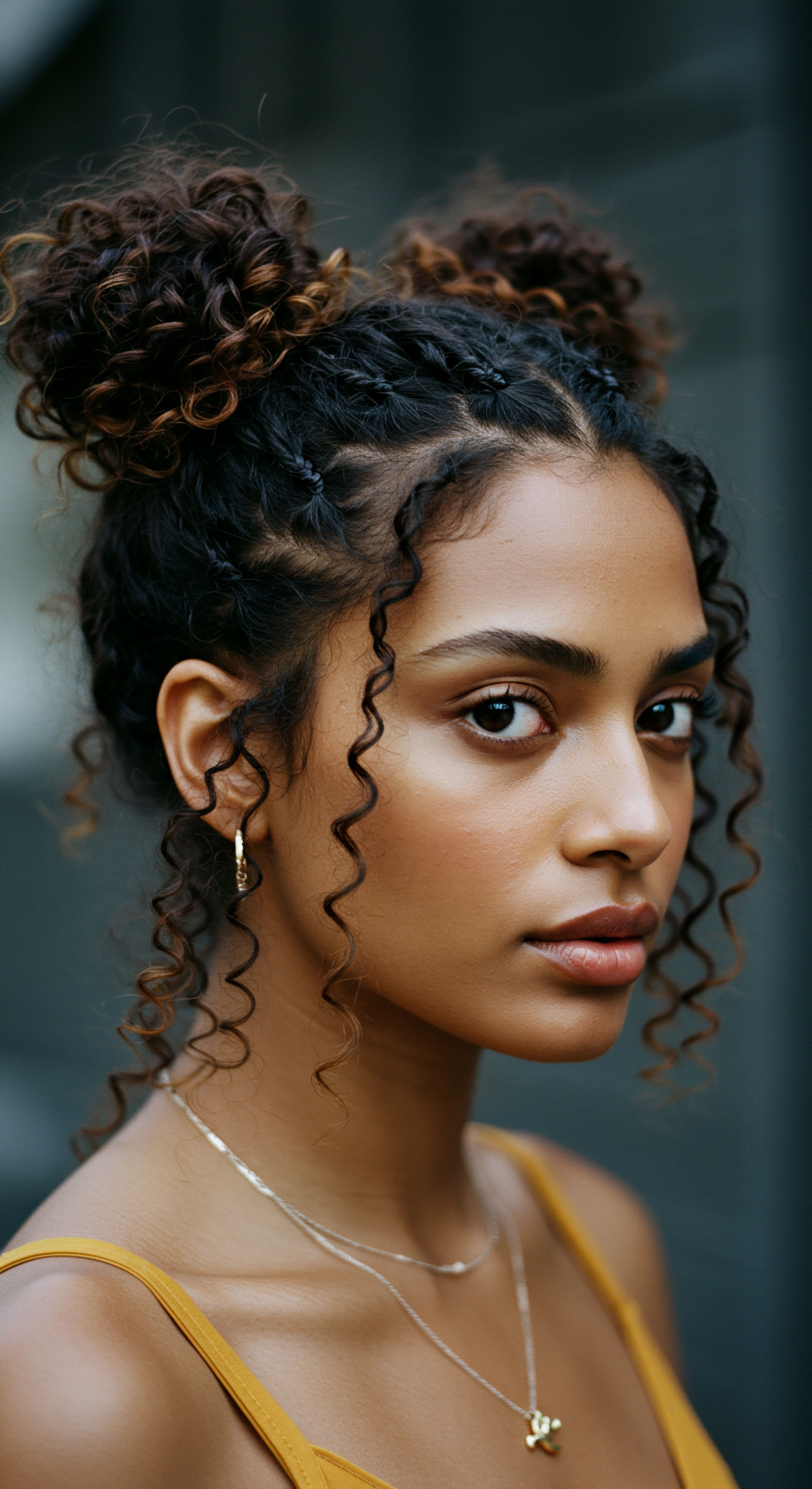
Humidity’s Interplay with Hair Structure
Beyond the triboelectric effect, the inherent hygroscopic nature of hair plays a role. Hair is naturally designed to absorb and release moisture based on the surrounding humidity. When the air is dry, hair rapidly loses its internal water content. This desiccation causes the keratin proteins within the cortex to shrink slightly, and the cuticle scales, which are typically held flat by internal moisture, can lift.
This lifting increases the surface area of the hair, making it more susceptible to friction and thus, more prone to generating and holding onto static charges. The rougher, drier surface also creates more points of contact for electron transfer, further amplifying the static effect.
Furthermore, the unique helical structure of curly hair presents a greater surface area per unit length compared to straight hair. This increased surface area means more potential points for friction and charge transfer. When individual curly strands become positively charged, their natural tendency to coil is overridden by the strong repulsive forces between them, forcing them to push away from each other and stand outwards.
| Environmental Condition High Humidity |
| Hair's Moisture Content High |
| Cuticle State Flat, smooth |
| Static Generation Low (charges dissipate) |
| Visual Effect Defined, less frizz |
| Environmental Condition Low Humidity (Dry Air) |
| Hair's Moisture Content Low |
| Cuticle State Raised, rough |
| Static Generation High (charges accumulate) |
| Visual Effect Frizzy, standing up |
| Environmental Condition Hair's interaction with humidity directly impacts its moisture level, cuticle integrity, and susceptibility to static. |
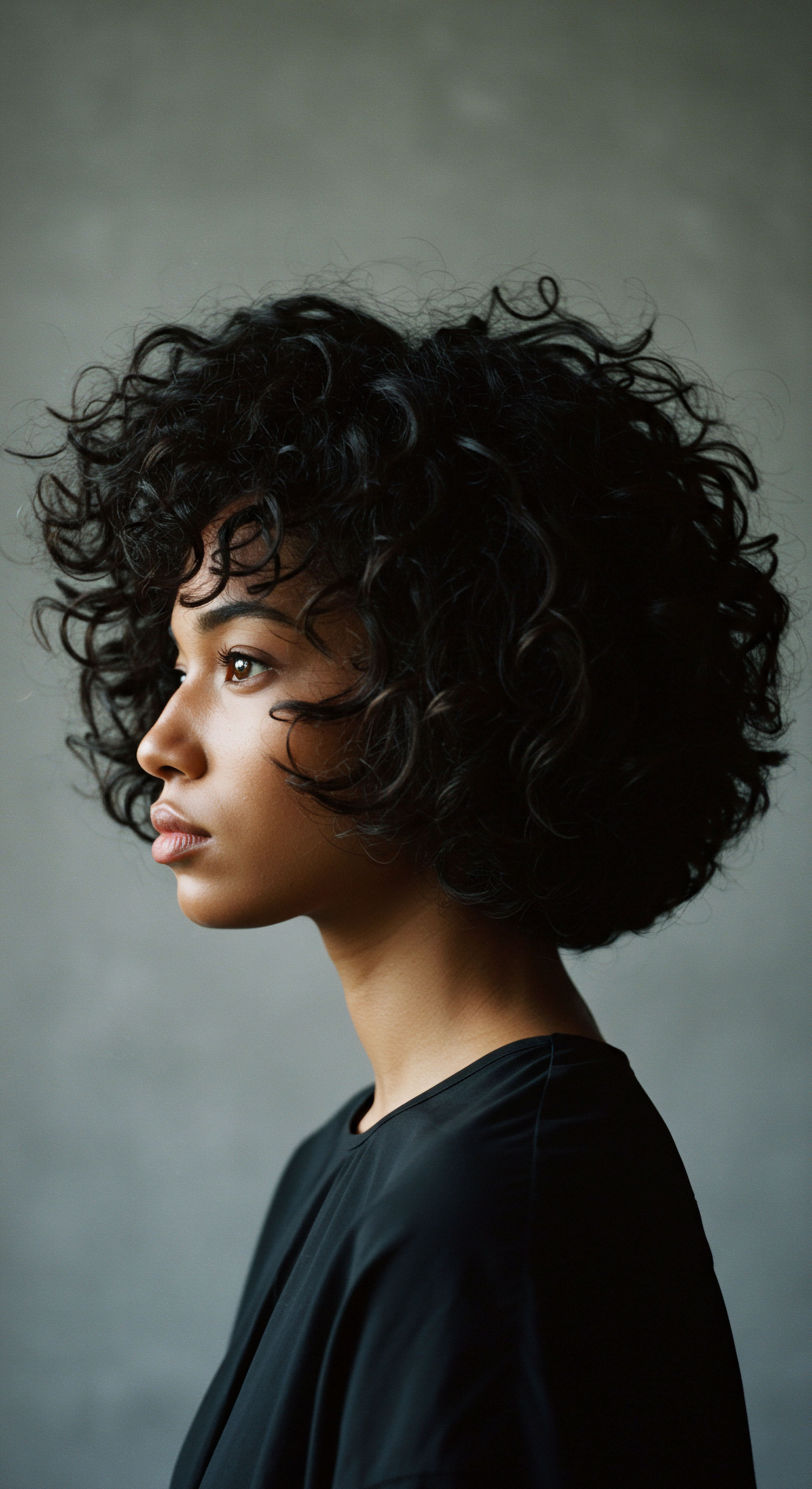
The Cultural and Social Context of Hair Behavior
The way hair behaves in dry conditions is not just a scientific phenomenon; it also holds cultural and social implications. For individuals with textured hair, particularly those of Black and mixed-race heritage, the challenges posed by dry air are deeply understood. Hair care practices across diverse cultures have long reflected an intuitive knowledge of hair’s hygroscopic properties and its susceptibility to environmental shifts.
Traditional practices often prioritize moisturizing ingredients, protective styles, and head coverings, all of which indirectly or directly combat the effects of dry air and static. The shared experience of hair standing up in dry climates forms a common thread in many textured hair communities, leading to a collective wisdom around its management.
The appearance of hair standing up can sometimes be perceived as unkempt or uncontrolled, leading to a desire for solutions that bring the hair back into a desired state of definition and calm. This drives innovation in hair care products and techniques, continually seeking ways to maintain moisture and minimize static in challenging environmental conditions. The science behind why hair stands up thus intertwines with the lived experiences and cultural responses to hair’s natural behavior.

Reflection
Our exploration of why curly hair might stand up in dry air reveals a beautiful convergence of science, personal experience, and inherited wisdom. From the delicate architecture of each strand to the invisible dance of electrons in the air, every element plays a part in this captivating phenomenon. Understanding these intricate connections allows us to approach our hair not with frustration, but with a deeper sense of reverence and informed care.
It is a reminder that our coils are not merely adornments, but living fibers deeply connected to the world around them, always seeking balance, always responding to the subtle shifts in their environment. This knowledge empowers us to move with intention, nurturing our textured hair with practices that honor its unique needs, allowing it to truly flourish in all its magnificent forms.
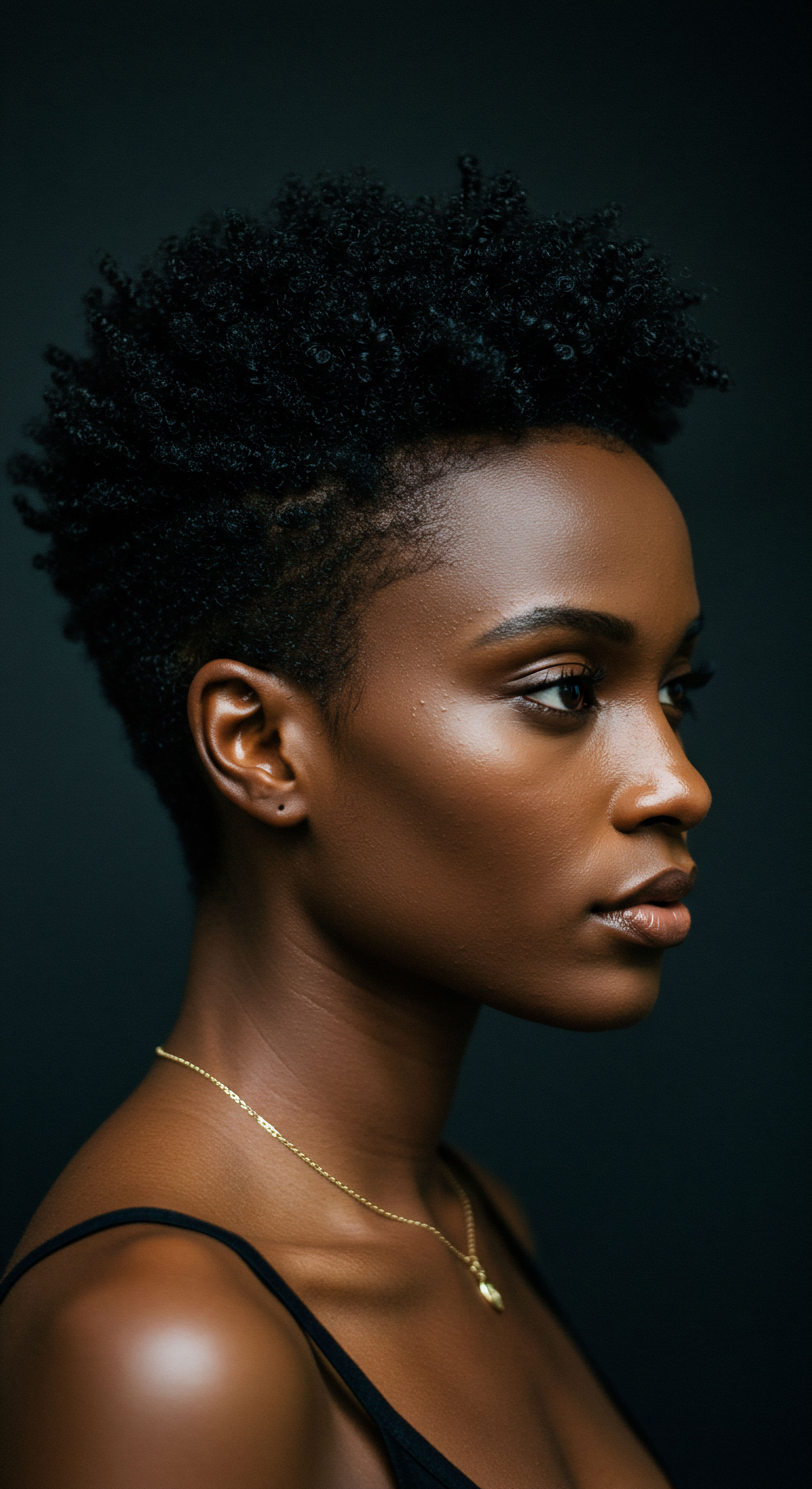
References
- Robbins, C. R. The Science of Hair. Springer, 2012.
- De La Mettrie, J. D. Hair Structure and Chemistry Simplified. Milady, 2007.
- Miller, J. D. et al. “Electrostatic Charging of Hair Fibers ❉ Influence of Humidity and Surfactant Adsorption.” Journal of Colloid and Interface Science, Vol. 167, No. 1, pp. 1-10, 1994.
- Marsh, J. T. An Introduction to the Chemistry of Hair. Chapman & Hall, 1947.
- Dawber, R. P. R. and Van Ness, J. E. Hair and Scalp Disorders ❉ Medical and Surgical Management. CRC Press, 1997.
- Bhushan, B. Introduction to Tribology. John Wiley & Sons, 2013.
- Shaw, D. J. Introduction to Colloid and Surface Chemistry. Butterworth-Heinemann, 1992.